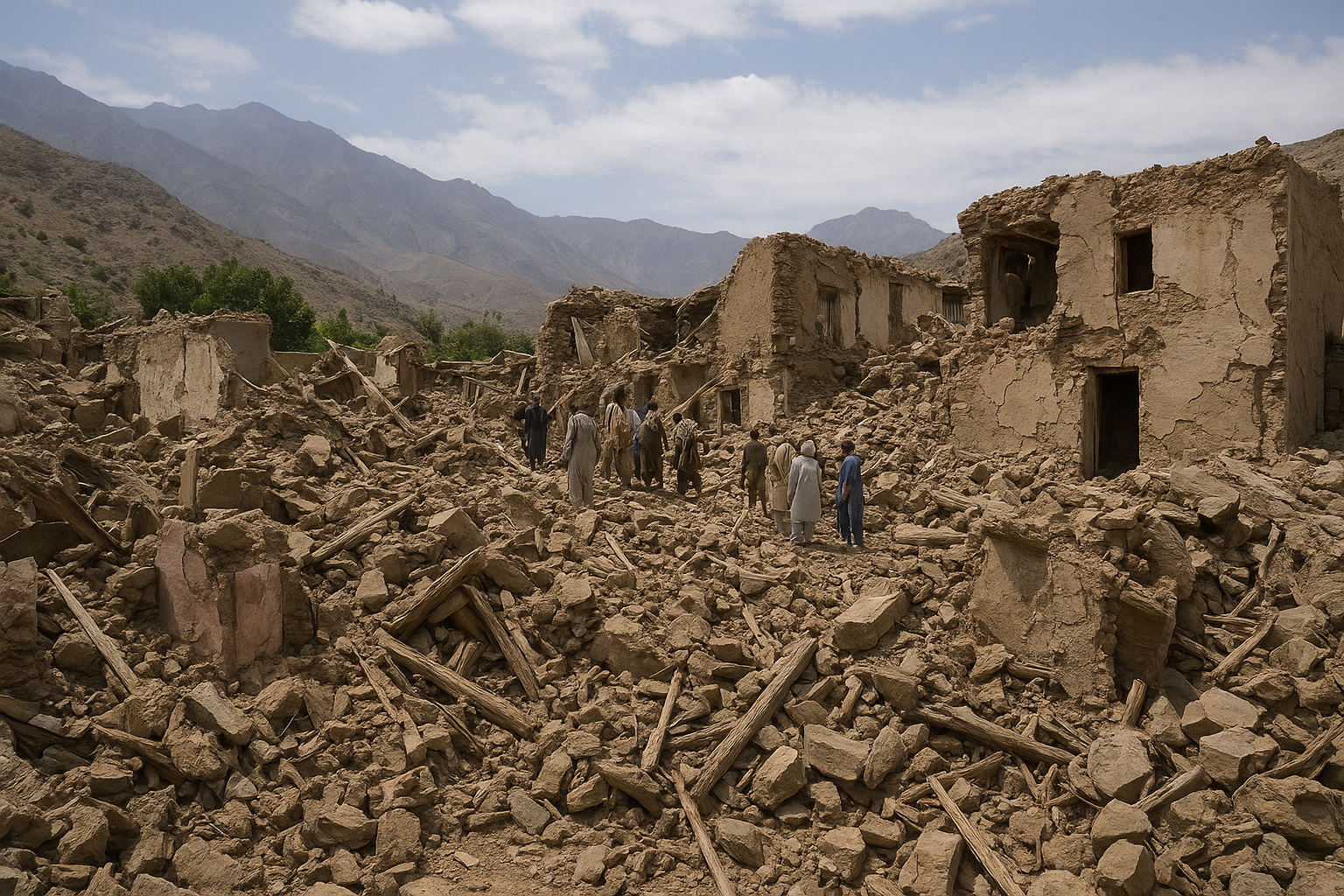A powerful 6.0 magnitude earthquake struck eastern Afghanistan late Sunday night, inflicting devastating damage across remote mountainous regions, notably in Kunar Province. According to officials, the disaster has claimed at least 800 lives, injured over 2,500, and completely destroyed multiple villages.

Epicenter and Immediate Impact
The tremor hit around 11:47 p.m. local time, with its epicenter located approximately 27 kilometers east-northeast of Jalalabad, near the Nangarhar-Kunar border region. Its shallow depth (8 km) intensified the destruction—particularly in areas where homes were constructed from vulnerable materials like mud bricks and poorly fired concrete.
Scenes of Horror and Rescue Efforts
Residents in Nurgal District, one of the worst-hit zones, recounted harrowing scenes: “Children are under the rubble. The elderly are under the rubble. Young people are under the rubble,” lamented a villager, urging aid organizations to rush help.
Rescue operations have involved locals, military personnel, and volunteers frantically sifting through debris—often using bare hands—to locate survivors. Helicopters have transported the wounded to hospitals, though access remains limited by blocked, landslide-ridden roads.
Broader Impact Across Regions
While Kunar suffered the heaviest casualties, neighboring Nangarhar also reported losses—12 dead and 255 injured in the Darai Nur District. Smaller numbers of injuries and damage have also been reported in Laghman, Nuristan, and Panjshir provinces.
Humanitarian Crisis Intensifies
Humanitarian agencies, including UNHCR, UNICEF, and the Afghan Red Crescent, are mobilizing emergency relief, calling for urgent field hospitals, shelter, clean water, and food. The United Nations has highlighted that this disaster deepens an already dire humanitarian situation, with many regions remaining unreachable due to the challenging terrain and poor infrastructure.
According to the latest assessments, over 12,000 people have been directly affected by the quake, with many losing homes or basic livelihoods. Entire communities in villages like Wadir are feared decimated—with as high as 90% casualties. In Mazar-e-Dara, dozens have perished, with nearly a hundred wounded and widespread structural collapse.
International Response and Challenges
While India and Iran have extended condolences and pledged aid, officials stress that cultural sensitivities and limited access to female medical staff are hindering rescue and treatment for women and children in conservative areas such as Kunar
Moreover, international humanitarian funding cuts have weakened emergency response infrastructure, resulting in overwhelmed hospitals and under-resourced evacuation efforts.
Aftershocks and Forecast
Several aftershocks, including tremors registering 5.2 and 4.5, have continued to beset the region, raising the fear of further collapses and complicating the rescue operations. Given Afghanistan’s location on active fault lines, such seismic activity remains a looming threat.
A Region Repeatedly Shaken
This isn’t Afghanistan’s first encounter with deadly quakes. In October 2023, a 6.3 magnitude quake caused thousands of casualties. Earlier, the June 2022 earthquake claimed over a thousand lives and obliterated hundreds of homes—demonstrating the country’s chronic vulnerability to seismic disasters







